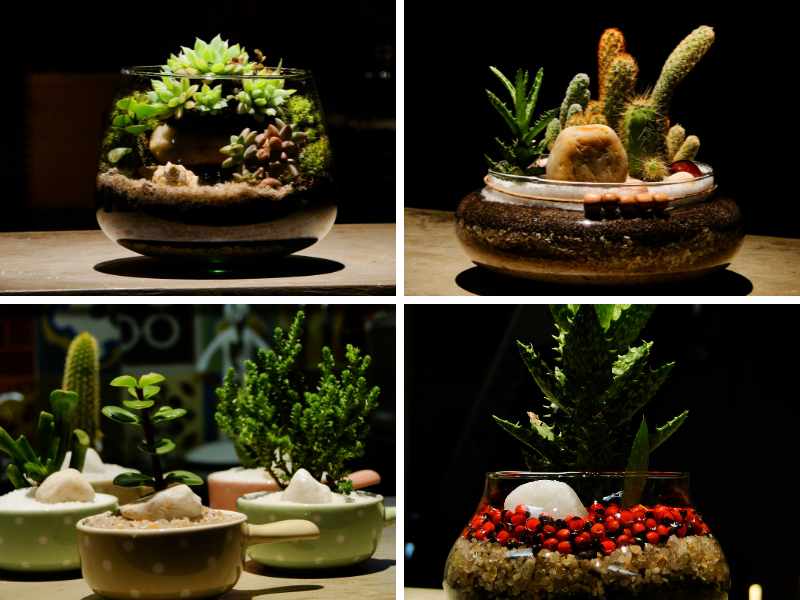In this post, we will look at 27 beautiful abstract flower art prints you can create.
Abstract flower art offers a unique blend of nature’s beauty with imaginative interpretations, allowing for endless creativity in design and form.
The following collection of 27 abstract flower art prints explores a wide range of styles, from minimalistic and geometric designs to bold, expressive brushstrokes and fluid watercolor techniques.
These pieces highlight the versatility of floral imagery, transforming traditional flower representations into dynamic compositions filled with color, texture, and movement.
Capturing the essence of petals in motion, experimenting with negative space, or incorporating modern digital aesthetics, each print invites viewers to experience flowers in a new, artistic light.
The collection embraces diverse artistic approaches, from pointillism and graffiti-inspired blooms to cosmic and surreal interpretations, showcasing how abstract art can breathe new life into floral themes. Through these designs, we celebrate the symbolic and visual appeal of flowers while pushing the boundaries of abstraction, offering a fresh perspective on one of nature’s most enduring motifs.
27 BEAUTIFUL ABSTRACT FLOWER ART PRINTS YOU CAN CREATE.
1. Monochrome Bloom.
 Concept: Choose a single color, like blue or pink, and explore all its shades and tones. The entire flower will be painted in this monochromatic palette.
Concept: Choose a single color, like blue or pink, and explore all its shades and tones. The entire flower will be painted in this monochromatic palette.
Design: A large flower, fully in bloom, with petals starting in dark tones near the center and fading to lighter hues as they extend outwards.
2. Whimsical Petals.
 Concept: A free-flowing and dreamlike portrayal of flower petals, scattered loosely around a focal point.
Concept: A free-flowing and dreamlike portrayal of flower petals, scattered loosely around a focal point.
Design: Petals don’t have rigid forms. Instead, they’re wavy and seem to float, as if caught in a breeze. Use soft pastels and blending to create an ethereal look.
3. Geometric Floral.
 Concept: Break the flower down into geometric shapes like triangles, squares, and circles.
Concept: Break the flower down into geometric shapes like triangles, squares, and circles.
Design: The petals might be represented by sharp, angular triangles, while the center of the flower could be circular or hexagonal. The abstract nature creates a modern, structured feel.
4. Minimalist Stem.
Concept: Focus on simplicity, using minimal elements to represent a flower, possibly just the stem and a single petal.
 Design: A single line or a few light strokes might represent the stem, with a simple shape or dot symbolizing the flower head. The minimal color palette emphasizes the design’s simplicity.
Design: A single line or a few light strokes might represent the stem, with a simple shape or dot symbolizing the flower head. The minimal color palette emphasizes the design’s simplicity.
5. Splattered Blossom.
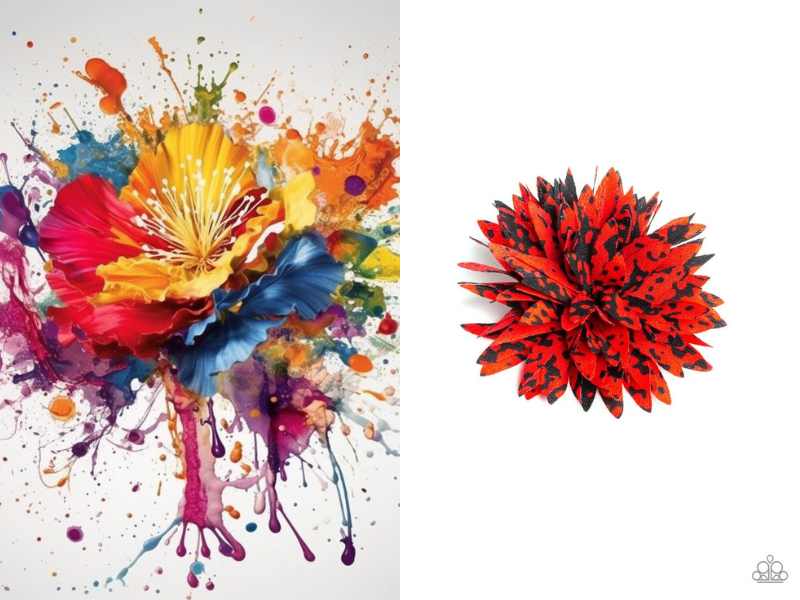 Concept: Use paint splatters to create the form of a flower. The splatters give a chaotic, unrestrained energy to the artwork.
Concept: Use paint splatters to create the form of a flower. The splatters give a chaotic, unrestrained energy to the artwork.
Design: Start by applying splashes of vibrant colors to represent petals, letting the paint run and drip. The flower emerges through the randomness of the splatters.
6. Stained Glass Flower.
Concept: Create a flower that looks like stained glass, with thick black lines  forming the shape and bright, bold colors filling in the spaces.
forming the shape and bright, bold colors filling in the spaces.
Design: Use heavy black outlines to define the petals, and fill in the segments with luminous colors, resembling stained glass artwork. A light background enhances the effect.
7. Bold Outline Flora.
Concept: Use thick, bold lines to create a flower. The outlines dominate the design, while the inner color fills are kept simple or left blank.
Design: Draw flowers with heavy black outlines, focusing on strong shapes rather than details. Fill the flower with either solid colors or leave sections open to draw attention to the outlines.
8. Impressionist Field.
Concept: Mimic the impressionist style by using short, visible brushstrokes to represent an abstract field of flowers.
Design: Rather than focusing on individual flowers, the artwork uses textured strokes to suggest the presence of a floral field. The emphasis is on color and movement.
9. Cosmic Flowers.
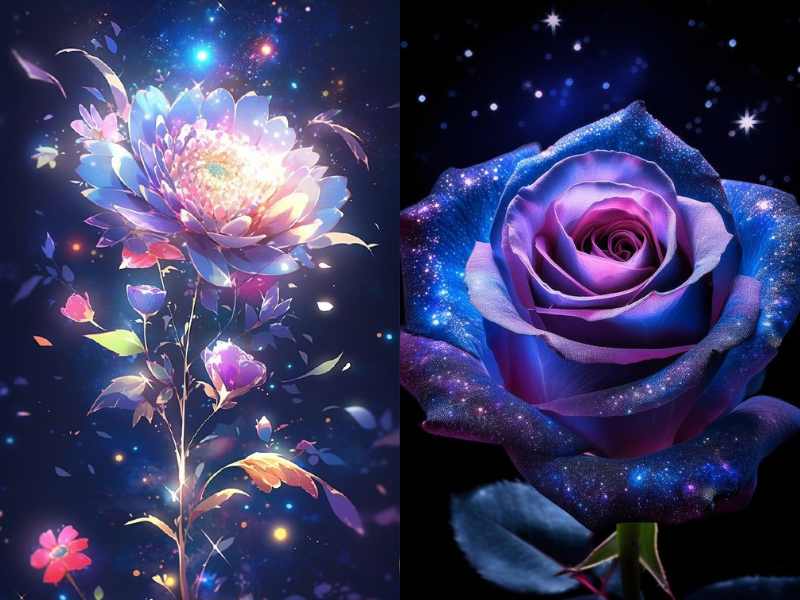 Concept: Create flowers using deep, space-like colors and textures. Think nebulae, galaxies, and cosmic energy.
Concept: Create flowers using deep, space-like colors and textures. Think nebulae, galaxies, and cosmic energy.
Design: The flower petals are dark blues and purples with sparkling accents of white and pink, giving the impression of flowers blooming in space.
10. Faded Petals.
 Concept: Create flowers with petals that fade into the background, giving the impression they are dissolving or disappearing.
Concept: Create flowers with petals that fade into the background, giving the impression they are dissolving or disappearing.
Design: Use soft pastels and blend the edges of the petals into the canvas so that they appear to gradually vanish, creating a peaceful, calming effect.
11. Layered Petals.
Concept: Each petal of the flower is created with transparent layers, adding  depth and dimension.
depth and dimension.
Design: Start with light layers of color and gradually build up transparency by using different shades. This gives the petals a 3D-like appearance.
12. Dotted Flower Patterns.
 Concept: The entire flower is created using only dots, a technique known as pointillism.
Concept: The entire flower is created using only dots, a technique known as pointillism.
Design: Thousands of small, colored dots come together to form the petals and stem. The dots blend at a distance to form a cohesive image, but up close, they maintain their individuality.
13. Brushstroke Blooms.
 Concept: Use expressive, sweeping brushstrokes to form the flowers. The energy of the brushstrokes becomes as important as the flowers themselves.
Concept: Use expressive, sweeping brushstrokes to form the flowers. The energy of the brushstrokes becomes as important as the flowers themselves.
Design: Use large, bold strokes to create the impression of petals and leaves. The strokes should feel spontaneous, with vibrant color combinations and dynamic movement.
14. Watercolor Drips.
 Concept: Use watercolor techniques to create flowers that drip and bleed across the page, giving them a fluid, organic form.
Concept: Use watercolor techniques to create flowers that drip and bleed across the page, giving them a fluid, organic form.
Design: Apply wet washes of color, allowing them to naturally flow into one another. Add drips that fall from the petals, making it look as if the flowers are melting or dissolving into the background.
15. Fragmented Blossoms.
 Concept: Depict flowers that appear broken or fragmented, giving the artwork a shattered, deconstructed appearance.
Concept: Depict flowers that appear broken or fragmented, giving the artwork a shattered, deconstructed appearance.
Design: Only portions of the flower are painted, with missing sections and geometric cuts that give the appearance of fragmentation. Use sharp contrasts between the solid parts and empty spaces.
16. Collage Flowers.
 Concept: Combine painted elements with paper or fabric cutouts to create a mixed-media floral print.
Concept: Combine painted elements with paper or fabric cutouts to create a mixed-media floral print.
Design: Paint the background and add petals or leaves using paper with different textures, colors, or patterns. The collage technique adds depth and a tactile quality.
17. Rainbow Petals.
 Concept: Each petal of the flower is painted in a different hue, blending through the spectrum of a rainbow.
Concept: Each petal of the flower is painted in a different hue, blending through the spectrum of a rainbow.
Design: Start with red at the topmost petal and work through orange, yellow, green, blue, and violet as you move around the flower. The petals should blend seamlessly from one color to the next.
18. Abstract Floral Burst.
 Concept: Create a floral design where the flower appears to burst or explode outward, radiating abstract shapes and colors.
Concept: Create a floral design where the flower appears to burst or explode outward, radiating abstract shapes and colors.
Design: The center of the flower is compact and detailed, while the petals seem to fly outwards in chaotic, expressive brushstrokes, creating a dynamic burst of color.
19. Petals in Motion.
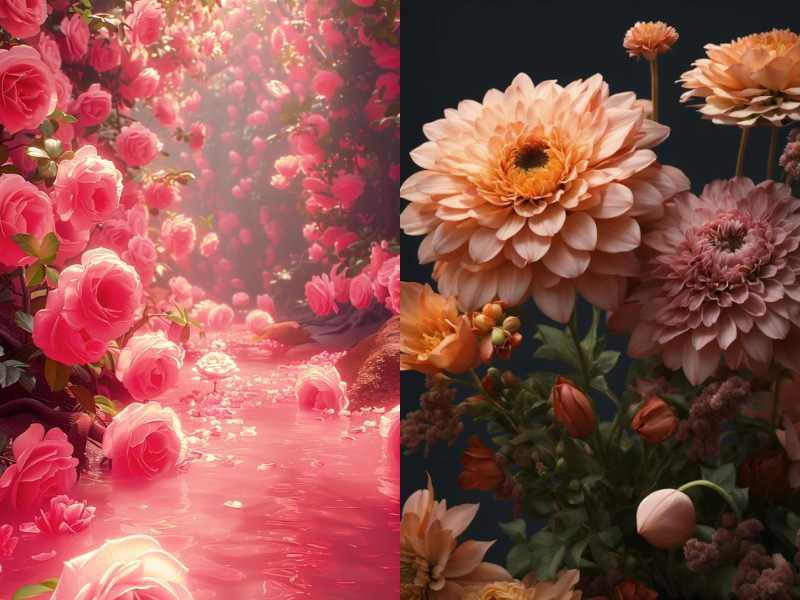 Concept: Create a sense of movement, where the petals look like they are being blown away or are floating in the air.
Concept: Create a sense of movement, where the petals look like they are being blown away or are floating in the air.
Design: Paint petals in a scattered pattern, gradually dispersing them further from the center. Use blurred edges and fading colors to suggest motion.
20. Soft Fade.
 Concept: A flower with a gentle gradient, where the colors of the petals fade softly into one another.
Concept: A flower with a gentle gradient, where the colors of the petals fade softly into one another.
Design: Use smooth transitions from one color to the next on each petal. This creates a serene, soothing effect, perfect for a calming floral print.
21. Graffiti Floral.
 Concept: Mix the raw energy of graffiti with the delicate form of a flower.
Concept: Mix the raw energy of graffiti with the delicate form of a flower.
Design: Use spray paint techniques, drips, and splatters to create an urban-style flower. The flower form should be bold and energetic, with neon or bright colors for contrast.
22. Wireframe Flower.
 Concept: Imagine a flower as a 3D wireframe structure and depict it with fine lines and skeletal shapes.
Concept: Imagine a flower as a 3D wireframe structure and depict it with fine lines and skeletal shapes.
Design: Create the flower using only thin, straight lines as if you’re sketching a wire sculpture. Keep the background blank or light to emphasize the delicate linework.
23. Neon Flowers.
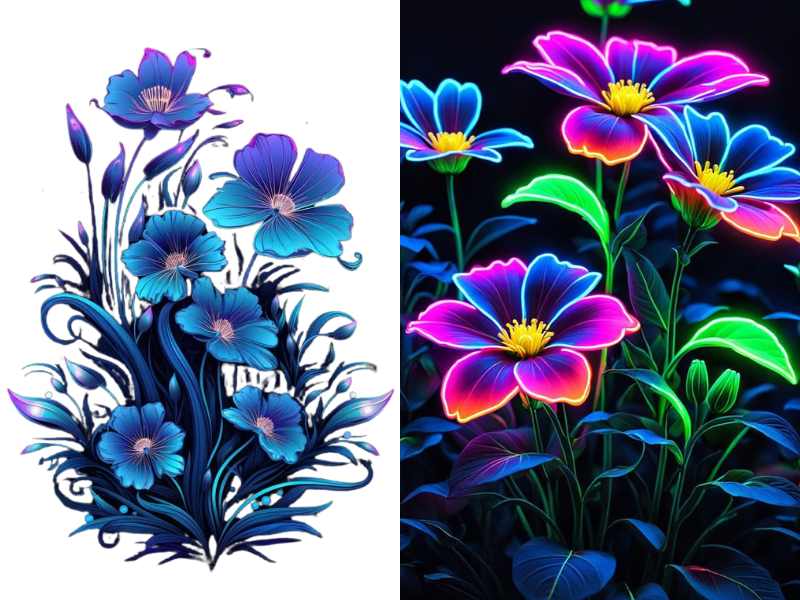 Concept: A bold flower design with neon colors that pop against a dark or black background.
Concept: A bold flower design with neon colors that pop against a dark or black background.
Design: Use neon pinks, greens, yellows, and blues to paint a flower that seems to glow. The dark background will make the bright colors stand out even more.
24. Black and White Ink Blooms.
Concept: A highly detailed, black ink sketch of a flower against a white background.
Design: Use fine ink lines to create intricate details in the flower’s petals and leaves. The contrast of black and white creates a classic, timeless look.
25. Liquid Flowers.
 Concept: The flower seems to melt or drip down the canvas, creating a fluid, organic effect.
Concept: The flower seems to melt or drip down the canvas, creating a fluid, organic effect.
Design: The petals start defined at the top of the canvas but gradually dissolve into liquid streaks as they move downward. The colors blend and run together, creating a watery appearance.
26. Pixelated Flora.
![]() Concept: Represent a flower in a pixelated, digital style, giving it a retro, blocky appearance.
Concept: Represent a flower in a pixelated, digital style, giving it a retro, blocky appearance.
Design: Use square blocks of color to form the flower, breaking it down into individual pixels. The result is a digital-inspired flower that feels both modern and nostalgic.
27. Negative Space Flower.
 Concept: Create a flower by painting everything around it, leaving the shape of the flower in negative space.
Concept: Create a flower by painting everything around it, leaving the shape of the flower in negative space.
Design: Paint the background or surrounding areas in a bold color, leaving the shape of the flower unpainted. This gives the illusion of the flower being “cut out” of the canvas.
This post will lead you to the 27 beautiful abstract flower art prints.
Similar post
25 creative ideas to display indoor plants.






